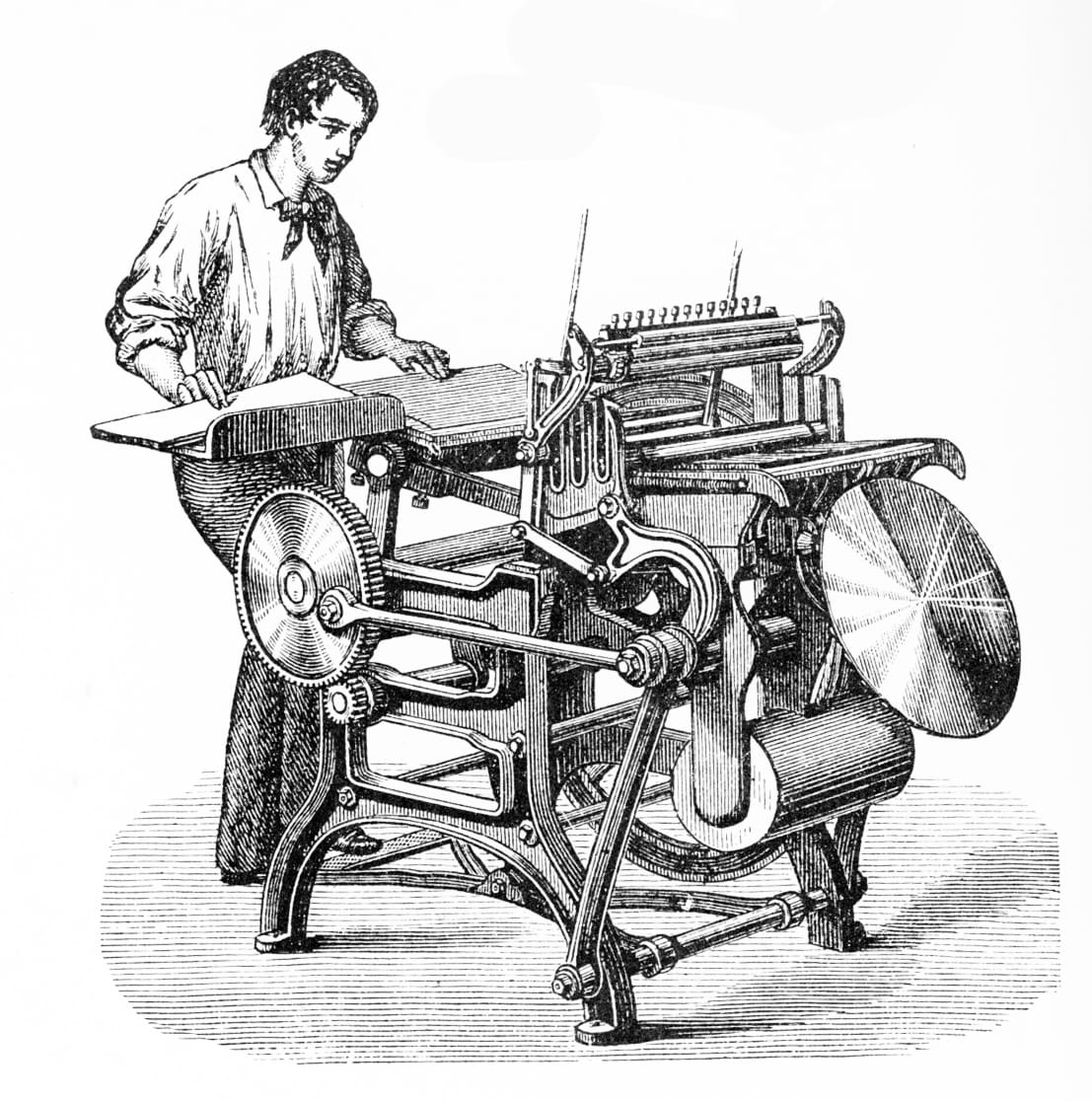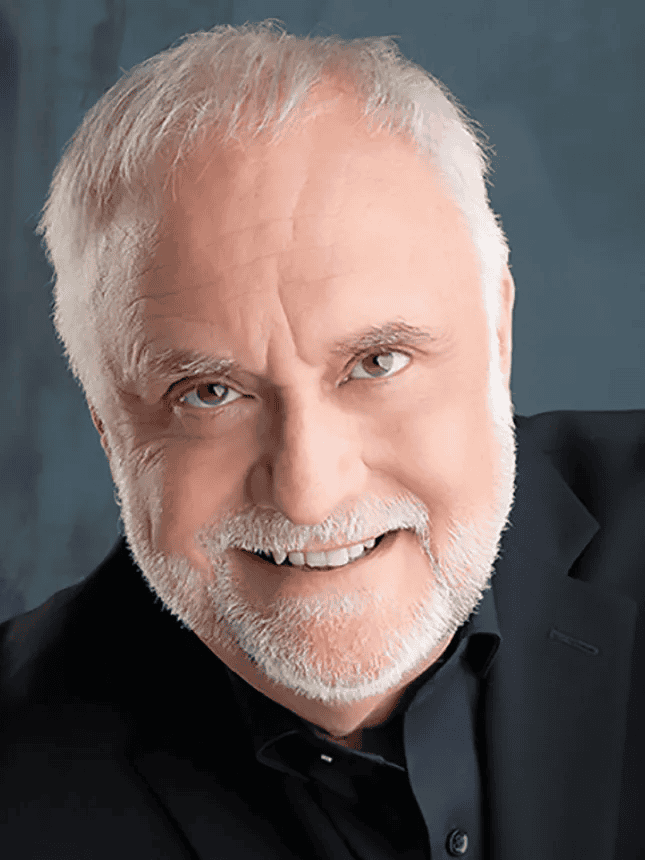When I was a teenager, one of my mentors in magic was a cheery old fellow in my hometown of Hinsdale, Illinois. His name was Talky Blank and he was, by trade, an actor. (His given name was Taalkeus Blank, and he appeared in a few movies— exploitation slasher films from the 1960s— using the name Jeffrey Allen.) He lived a wonderful life in service of a tight little community—he ran the Hinsdale Community House, produced local plays, organized clubs, and distributed meals at senior centers. As part of his peripatetic, inspired community organizations, he’d put together some sort of local magic club—which is how I met him. He had a shelf of glorious old books and a cupboard of forgotten plywood tricks from Abbott’s or Ireland’s, and back when I was growing up, that’s how you met friends in magic.
Like all the wonderful people who populated that world of magic, we’d start by talking about tricks and then move on to life lessons. He’d recall his various misadventures, comically misguided efforts to stage the opera Aida in a football field, or improvise a new ending for a Broadway comedy at a local theater. Even more than the tricks, those stories became important to me. On one occasion, Mr. Blank delivered the punchline that could have served any of his best stories. “You know, Jim, I never did anything that I didn’t learn something from,” he said, his bushy gray eyebrows raised as his big blue eyes peered over the top of his glasses. “If nothing else, I learned… never do that again!” He punctuated his punchline by roaring with laughter.
Over the years, I’ve made note of a number of quotes that express the same sentiment, but in much more learned, head-nodding ways. (After all, Mr. Blank’s rumbling laughter was intended to emphasize the sheer stupidity of his exploits.) Maybe the grandest of these quotes was Santayana’s: “Those who cannot remember the past are condemned to repeat it.” The point of most of these quotes is a simple irony—if you think the value of history is that it tells us what to do, clever people realize that it actually tells us what to avoid. We are all trying to stop being stupid.
Or perhaps, the better lesson follows that point: An idealized, enshrined, and official history of anything is merely a myth, because we choose to readjust it constantly to tell different stories and provide new and different perspectives.
I’ll say it this way: If we could still tell the history of America with my seventh-grade history textbook, the history of America simply wouldn’t be worth telling.
Instead, the history of America is very much worth telling. All the new perspectives that have been presented since that time (often branded as “fashionable” or “politically correct”) lead to a better appreciation of our history. In seventh grade, I recall, 20th-century American immigration was told with examples of Irish and Jewish immigrants coming to our shores, facing discrimination, and then settling into urban communities where they made important contributions. Those were deliberate examples—a lot of the seventh-graders reading those books were third-generation Americans from Irish or Jewish families or knew other kids who were. The story was significant to us. The history was interesting and vital.

And so, nearly half a century later, those stories are different because they should be different. They focus on different groups. And just as they were when I was a kid, those stories may not be happy, or even heroic, but they lead to an understanding of the complexities of a remarkable country. As a fan of history and someone who reads history and writes history, it’s always frustrating to see that history books have become subjects of political debates—that they can be attacked to create deliberately divisive viewpoints or score cultural points. A textbook rewritten today, which may discuss women’s rights, or gay rights, or Armenian or Somalian immigrants, is not being rewritten in an effort to “change history” but is attempting to inspire readers with the relevant examples of the same story: the complexities of a remarkable country.
A couple of years ago, I was invited to a national magic convention and was surprised to find that magic history had generated some of the same grumbles from club members. Why were we giving new emphasis to women magicians, or Black magicians, or LGBTQ+ magicians? Why does the great history of magic need to be rewritten and adjusted for “overtly political” purposes?
I’m an unabashed fan of Walter Gibson books, and William Lindsay Gresham books, and Milbourne Christopher books. My personal favorites, from childhood, have always been the conversational Will Dexter magic histories. But those histories need to get retold, and their points of view need to be expanded. My books also need to get rewritten and expanded. Our history needs to be interesting and vibrant from today’s perspective. And here’s the great news: It can be. The story of magic is interesting enough and rich enough to tell those stories again and again in new ways. It deserves those new perspectives. Some of those points of view are far more exciting and more inspiring than the “Kellar-Thurston-Houdini-Blackstone” parade that constituted magic history when I first read the books on Mr. Blank’s shelf.
“These stories give us new opportunities to tell our histories again and again from different points of view and with different emphases.”
I think most people understand that history is rewritten when new information becomes available. That seems logical, and it’s essentially true. We can see it in a progression of interesting and distinct Houdini biographies over the years. In 2001, when Bill Kalush and Larry Sloman published their biography, Houdini, it represented a remarkable step in scholarship, with real revelations about Houdini’s personal relationships and work that surprised readers. But it’s never as simple as adding more information, the way that we might keep expanding an appendix at the end of the traditional Houdini story.
Gresham’s Houdini is a distinct character, very different from Christopher’s Houdini, who is a very different person from Kalush and Sloman’s. Their information and cultural perspectives change the lens through which the story is told. Gresham ends up with a scrappy vaudeville performer. Christopher readjusted the focus, and described a magical savant. Kalush and Sloman surprised us with a modern master of publicity and popular culture. None of them were wrong, and none of them were right, in the same way that Orson Welles’ famous
Citizen Kane demonstrated how a rich story seems to be three, or five, or an infinite number of dramatically different tales.
The lure of more information can also become a trap. Harold Kellock, the author of the first Houdini biography, Houdini, His Life Story, must have had access to the most information. He published the book in 1928, just two years after Houdini’s death. Kellock was not only able to comb through Houdini’s letters and manuscripts, but he also worked directly with Houdini’s widow, Bess, and was able to contact almost all of the late magician’s friends and associates, hearing their stories first-hand. But Kellock’s biography is famously dull for precisely those reasons. The author had very little perspective. Bess was still keeping secrets—no doubt trying to decide the most complimentary way to tell the story—and Houdini’s associates were still offering careful tributes to their friend.
When I was writing The Glorious Deception—my biography of William Robinson, the white American performer who took the stage as the Chinese magician Chung Ling Soo—I was surprised by the shortsightedness of Dexter’s popular 1954 biography, The Riddle of Chung Ling Soo. Dexter didn’t write about Robinson’s complicated personal life, his mistress and their children, or his betrayal of his wife and co-star, Dot Robinson. Why didn’t he tell that story? Many of Robinson’s friends, who knew the details, were still alive at the time and spoke to Dexter. Robinson’s children were still alive as well, and still living in London.
During my research, I discovered that Dexter had known it all, and discussed it all. He planned on writing the whole story, but the subject was still too sensitive for Robinson’s children, who held important jobs in the London business world and did not wish him to reveal publicly that they were illegitimate. In fact, they threatened to sue Dexter if he disclosed those family secrets.
The Riddle of Chung Ling Soo is a deftly constructed book. Dexter was forced to write around a number of subjects, yet he still produced a fascinating biography. During my research, I benefited from Peter Lane’s years of work on Soo. On one of my trips to London, Peter asked me if I wanted to meet the family—now the grandchildren—and discuss the topic with them. “I don’t know!” I told Peter, remembering the threats made to Dexter in the 1950s. “Do I want to talk to the grandchildren?”
“Oh, you do want to talk to them,” Peter told me with a laugh. “Things are different now.”
Things were very different. Grandchildren, one more generation removed from the controversies, no longer felt a threat to their legitimacy. They simply wanted answers to their questions, and they were excited that a writer had been exploring all those subjects. I believe that they had more questions for me than I had for them. After we met, I left that afternoon with their encouragement and thanks, and I felt more than a bit of sympathy for Dexter. He was apparently writing his book at the best possible time, but it turned out to be the worst possible time. Half a century later, I was the lucky one.

Of course, both Dexter and I told the story from a Western perspective, focusing on the difficult personality of Robinson, who impersonated a Chinese magician. Several years ago, a talented writer named Sam Porteus told the story from a different perspective, focusing on Ching Ling Foo, the actual Chinese magician who came to America and inspired Robinson to adopt a new persona. That story was a revelation, pulling the rug out from our traditional tale of “great magicians” by including an Asian innovator that had influenced magic around the world.
I had a similar experience, just years later, when I was researching a biography of Howard Thurston, which was published as The Last Greatest Magician. Jane Thurston, his adopted daughter, had died several years earlier. I’d known Jane, who talked about her father and her childhood in an engaging, romantic way. At the same time, I realized that this was a particularly steely part of her personality. There was plenty of evidence that she had endured a difficult childhood, and struggled with tragedy and dishonesty in connection with Thurston and her mother.
I spoke to Jane about my desire to write a Thurston biography, but I never actually had the opportunity to speak with her about it. When I researched my story, I told it honestly and with deference to Jane, whom I had always admired. Still, a relative of hers read the manuscript and told me, “If Jane had been alive, she never would have let you write about her mother and father that way.” In fact, since the book was published, I’ve learned of additional personal scandals that surrounded the Thurston show, which Jane had deliberately ignored over the years. I believe that Jane had a very unhappy childhood. To her credit, she had resolved to tell the story differently. My Thurston biography was written at a particular time, and with a particular point of view, suggested by my sources. That is—essentially—how any history is written.
New information, however, doesn’t just appear in an old letter or in the pages of a long-forgotten publication. New information can also be inspired by a new understanding. The Confidences of Robert-Houdin, his famous autobiography (often called his Memoirs), is a curious book. If you read that book as a teenage magician—and many of us did—it presents itself in a particularly memorable way: It’s an inspiring call to arms, a celebration of art, and a bracingly honest look at the goals of a conjurer. But if you read that book as a middle-aged magician, certain sections can be puzzlingly vague and indistinct. It can be gossipy, trivial, and then astonishingly naïve about magic, as if it were being written to please the public rather than represent an understanding of the art.
About 20 years ago, I reread The Confidences and was surprised by the last section of the book, the story of Robert-Houdin’s Algerian triumph. It is prejudiced and dismissive about the native Algerians in a way that is not surprising—that is, it shows the expected French colonial attitudes of Robert-Houdin’s day. But to a modern reader who might stop to question the disparaging descriptions of the “crude” Algerians—the story begins to fray. I would now say that the confusing elements that seem to deconstruct and twist apart are easily seen in Robert-Houdin’s description of the event. He was unsure of his mission, unclear about its importance, and unreliable about the intended result. He assembles his account with an understandable bit of showman’s exaggeration, but the entire mission seems to have been clouded with misunderstanding.
Every subsequent retelling has sought to improve upon Robert-Houdin’s story and shore up his shaky mission.Written descriptions from the last decades now indulge in a standard overstatement—that he stopped a war or quelled an uprising. He did no such thing, and never made those claims. It’s apparent that Robert-Houdin intended his performance, at a regularly scheduled autumn festival, to be strictly entertaining, with the hope that a display of French magic, electrical tricks and mechanical effects might intimidate the chieftains. It did not. The Algerians seemed to have enjoyed his show and praised it as a clever performance. Will we ever have the opportunity to hear about that performance from the point of view of someone sitting in the audience? That would be an intriguing perspective.
“Our history needs to be interesting and vibrant from today’s perspective. and here’s the great news: it can be.”
Deep in my Thurston story, I was able to tell the story of George White, Thurston’s famous assistant. White was African-American, and Thurston hired him when he was a teenager. White accompanied Thurston on his first American vaudeville performance at Tony Pastor’s Theater, and he was present—backstage and onstage—for every single show in Thurston’s life. He was famously experienced, and inspiringly charismatic and focused onstage. Orson Welles once told me that the best thing in the Thurston show was White, who had a knack for subtly hovering behind the magician, allowing Thurston to emphasize the magic, and then “styling” or pointing-up the trick with a gesture and a smile, effectively triggering the applause. In many ways, White was the master of misdirection who elevated Thurston’s magic.
In a different situation—or more explicitly, if Thurston’s assistant had been white—George White may have quickly become a star performer with his own magic show. That’s how Robinson learned the trade, and then became a starring magician. In the 1920s, the Chicago Defender, a famous Black newspaper, ran an amazing interview with White which, even today, gives us a chilling sense of the times. “A member of the Race… the man next to the World’s Greatest Magician,” the article proclaimed. “There are thirty people in the show that take orders from White.” This wasn’t an exaggeration. White was responsible for many elements of Thurston’s elaborate production and was introduced by Thurston at every performance. But White often ended up sleeping in the theater because city hotels refused him a room.
Those Black magicians who did find a starring role on stage present us with other amazing situations. For magicians like Black Herman, M.H. Everett, or Fetaque Sanders, what was it like to be considered a “lesser person” with the discriminations of daily life, but to be considered “a special person” enhanced with magical powers once they stepped on the stage? What was it like for the Black members of their audiences; what was it like for the white members of their audiences? This situation changes the dynamic of a modern magic show and, no doubt, changes the nature of their magic.
So, when magicians scoff at “fashionable” history and wonder why we now feel a need to focus on minority performers, I often end up talking about George White or Dot Robinson. Dot was William Robinson’s wife and assistant, and she was probably one of the most skilled stage magicians that ever performed. But similar to White, she always played the role of an assistant—the subject of the magic instead of the magician.
These stories give us new opportunities to tell our histories again and again from different points of view and with different emphases. They give us opportunities to make personal connections with new readers and invite us to reexamine well-worn stories from the past. Most importantly, they make history accessible by inviting readers to combine the glories with the mistakes—the same way Santayana suggested history should be used, and the same way Mr. Blank laughed at his own miscalculations.
We shouldn’t miss these opportunities. Instead of trying to muster the usual tales about magic history and attempting to march them in front of new audiences, we can adjust the focus, step back, and let the history speak for itself and inspire new audiences. We have a rich, intriguing story to tell, but we make a mistake by giving up on it too easily—by not using some new magic words to describe our art.

